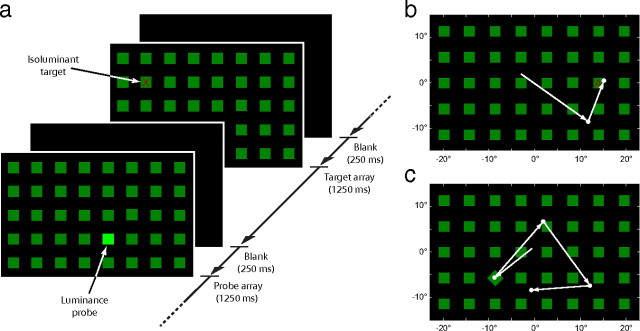Figure 1.
Visual search for target letters with salient nontargets. a, Structure of the task: subjects were presented with a sequence of randomly interleaved target and probe arrays. b, A typical target display, consisting of distractors (green squares) and a single target (red letter). Arrows indicate one healthy subject's sequence of fixations on the array: here the red target A (isoluminant with the green squares) is located on the second eye movement. c, A typical probe display, consisting of distractors and a single high-salience orientation probe (in this case a rotated square; note that probes could differ from distractors either in luminance, onset, or, as here, orientation). Arrows indicate one healthy subject's scan path: despite its irrelevance to the search task, an immediate eye movement is provoked by the visual salience of the probe.

